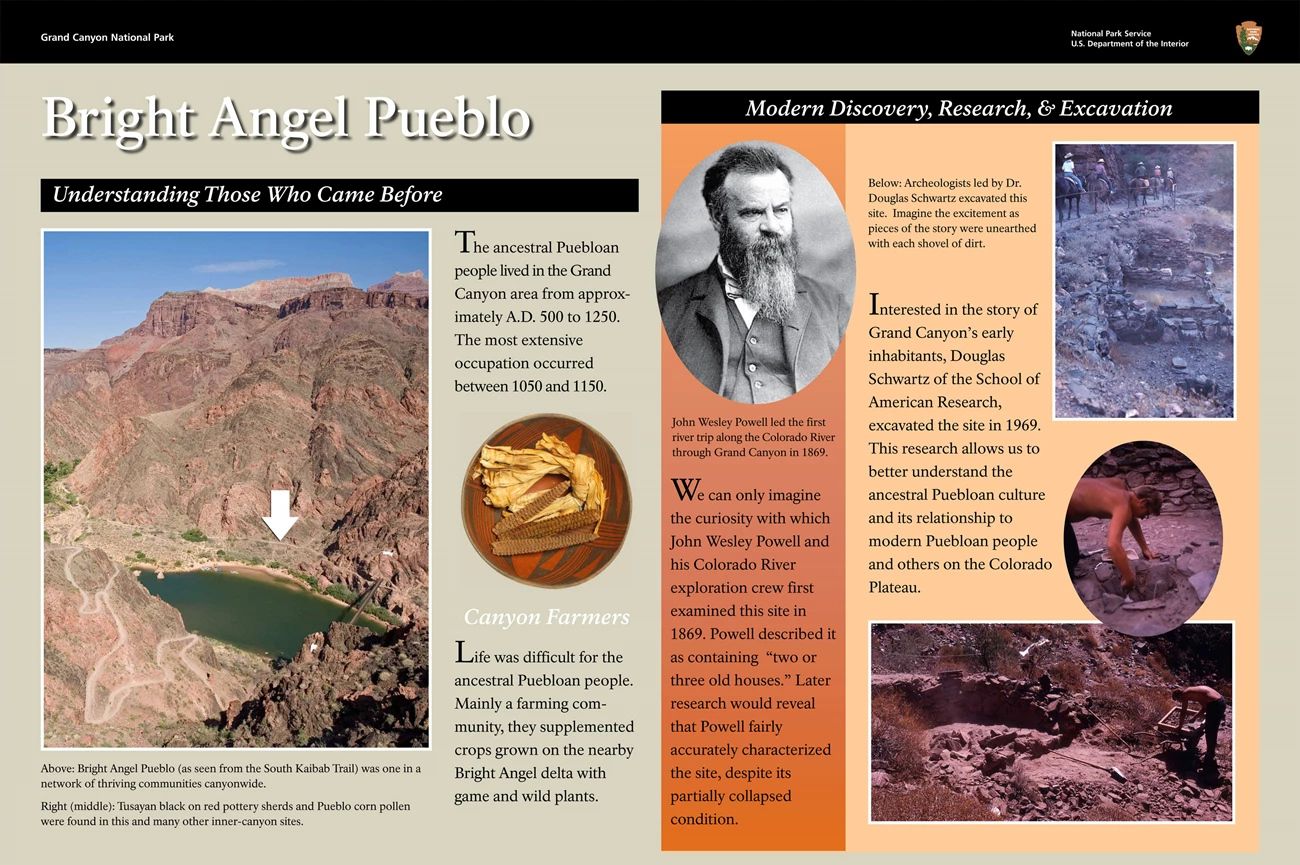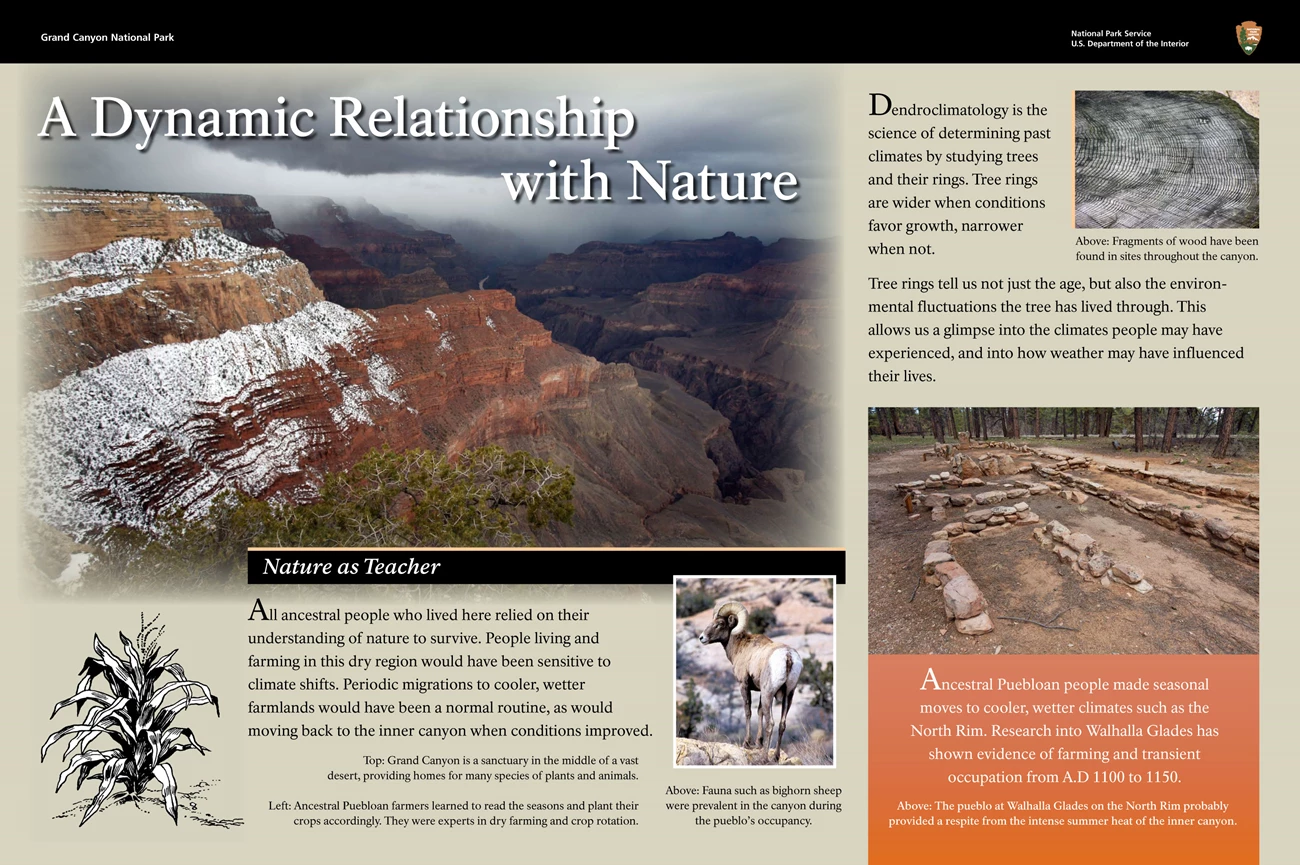
After several years of consultation, research, planning and design, in March of 2010, exhibits were installed at the bottom of the Grand Canyon to interpret the ancestral Puebloan site that was home to an extended family 900-1000 years ago. Click on one of the thumbnails to download a higher resolution file (8 inches wide @ 300 dpi. 1.8 MB jpg) Then, to save the file to your computer, right-click on the large photo and select, "save picture as." 
Hiking down to Phantom Ranch to see the pueblo site should not be done as a day hike.
Stabilization of Bright Angel Pueblo took place from June 13-17, 2002. Removing vegetation and cleaning out rooms was the final aspect of treatment. Vegetation was removed from all rooms. Brittlebush was the primary plant removed but grasses, cacti, and acacia were also removed. Brittlebush were also cut along the rail above the site to allow visitors to more easily see in to the rooms. The social trail running along the cable fence on the north and east side of the site was rehabilitated and closed. The trail in the drainage was cleaned out by removing overhanging branches, removing loose stones and defining the start of the trail near the river. March 2010 Exhibit Installation Crew
NPS/M. Quinn Additional members of the exhibit research and design team included former Grand Canyon archeologist (currently at Navajo National Monument) Ellen Brennan, park ranger Pam Cox, Hopi cultural resources consultant Lyle J. Balehquah, designer Kim Buchheit of Buchheit Creative Services and the staff at Northern Arizona Signs of Flagstaff, Arizona. The exhibit panels may be viewed and downloaded below.




|
Last updated: September 2, 2025
